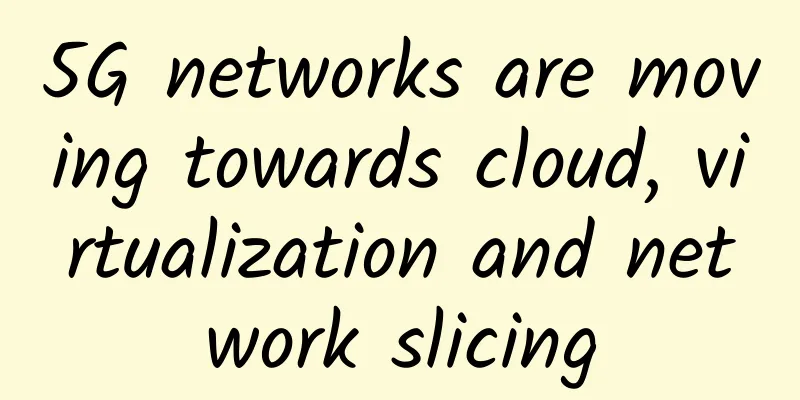Do you understand these IPv6 issues?

|
1. We are currently using IPv4 network. What do we need to do to deploy IPv6? The current network is IPv4. It is neither necessary nor possible to upgrade all nodes to IPv6 at the same time. When deploying IPv6, you can gradually transition and try to use some technologies to make the network upgrade smoother. The commonly used technologies in the process of converting from IPv4 to IPv6 are: (1) Dual stack technology: the device or terminal supports both IPv4 and IPv6 protocol stacks, so that the device can work normally in both IPv4 and IPv6 environments (all devices need to support dual stack) (2) Tunnel: Solving the IPv6 "island" problem <1> Manual tunnel: The end point of the tunnel needs to be manually specified a. IPv6 over IPv4 manual tunnel Directly encapsulate IPv6 packets in IPv4 packets. The border device must be a dual-stack device, and the intermediate IPv4 device processes it according to normal packet forwarding. b. GRE tunnel Encapsulate the IPv6 message in the GRE message and add the IPv4 header before the GRE Compared with ipv6 over ipv4 tunnel, GRE has an additional 4-byte GRE header, and the overhead caused by encapsulation and decapsulation is relatively large. <2> Automatic tunnel: can automatically obtain the IPv4 address of the tunnel endpoint a. 6to4 Put the destination in the 2nd and 3rd blocks of the IPv6 address The format of the tunnel address is: 2002:32bit ipv4 address::x/64 Write two static routes: 2002::/16 tunnel The next hop of the target network: the tunnel port address of the target network (2002: ipv4 address:: x) (3) NAT-PT: Enables mutual access between IPv6 hosts and IPv4 hosts
2. What are the advantages and disadvantages of stateless autoconfiguration and stateful autoconfiguration? What are the special addresses? (1) Stateless automatic configuration The IPv6 stateless address configuration method is currently the most widely used IPv6 address automatic configuration method. A host configured with this protocol only needs to enable the IPv6 routing announcement function on the adjacent device, and the local address can be automatically configured based on the prefix information contained in the announcement message. In the stateless address configuration scheme, the device does not record the specific address information of the connected IPv6 host, which has poor manageability. In addition, the current stateless address configuration method cannot enable the IPv6 host to obtain the configuration information such as the IPv6 address of the DNS server, which has certain defects in usability. (2) Stateful automatic configuration Compared with other IPv6 address allocation methods (manual configuration, stateless automatic configuration of network prefixes in router advertisement messages, etc.), DHCPv6 has the following advantages:
(3) Special address <1> Unspecified address 0:0:0:0:0:0:0:0/128 or ::/128 Indicates that an interface or node has no IP address. <2> Loopback address 0:0:0:0:0:0:0:1/128 or::1/128 It has the same function as 127.0.0.1 in IPv4 and is used to test whether the protocol stack is working properly. 3. What are the ways to configure IPv6 addresses? (1) Manual configuration (2) Stateless automatic configuration The network prefix is announced to this network segment through "router discovery". When the device receives the network prefix, it generates an IPv6 address based on the received network prefix and EUI-64. IPv6 host stateless automatic configuration process:
(3) Stateful autoconfiguration (DHCPv6 multicast address: FF02::1:2) This is usually achieved through DHCPv6, which is divided into two types: stateful autoconfiguration and stateless autoconfiguration: a. DHCPv6 stateful automatic allocation The four-step interactive address allocation process of DHCPv6 is as follows:
b. DHCPv6 stateless automatic allocation The DHCPv6 stateless working process is as follows:
4. What is EUI-64? (1) The IEEE EUI-64 specification is the process of converting the MAC address of an interface into an IPv6 interface identifier. The first 24 bits of the MAC address are the manufacturer identifier, and the last 24 bits are the extended identifier. The upper 7 bits are 0, indicating that the MAC address is locally unique. The first step of the conversion is to insert FFFE between the manufacturer identifier and the extended identifier of the MAC address, and the second step is to change the upper 7 bits of 0 to 1 to indicate that this interface identifier is globally unique. This method of generating an IPv6 address interface identifier from a MAC address can reduce the configuration workload, especially when stateless address automatic configuration is used. Only an IPv6 prefix needs to be obtained to form an IPv6 address with the interface identifier. However, the biggest disadvantage of using this method is that anyone can deduce the third-layer IPv6 address from the second-layer MAC address. (2) The serial interface will borrow the MAC address of the Ethernet interface 5. How is the link-local address generated? What is its function? Compared with IPv4, explain its importance (1) A link-local address is a type of address with limited application scope in IPv6 and can only be used between nodes connected to the same local link. It uses a specific link-local prefix FE80::/10 (the highest 10 bits are 1111111010) and adds the interface identifier to the lower 64 bits of the address. (2) When a node starts the IPv6 protocol stack, each interface of the node will automatically configure a link-local address (the interface identifier formed by its fixed prefix + EUI-64 rule). This mechanism allows two IPv6 nodes connected to the same link to communicate without any configuration. Therefore, link-local addresses are widely used in applications such as neighbor discovery and stateless address configuration. (3) Function:
6. What fields are there in the IPv6 header? Which one indicates the priority? Basic header 40 bytes:
Traffic class indicates the priority. 7. IPv6 mobility? Divided into 3 stages
8. Can IPv4 develop stateless auto-configuration? Stateless autoconfiguration is to announce the network prefix of the network segment through a certain (RA) message. After receiving the network prefix, the client calculates the host number (interface ID) according to a specific algorithm. This is completely achievable in ipv4, but problems may often occur because the address space of ipv4 is very small. After the network prefix is allocated, the host number calculated by the host may conflict, and there may be a large number of address conflicts in the network:
|
<<: What are the applications of machine learning in network management?
>>: Hang Seng Bank launches new generation digital financial infrastructure LIGHT
Recommend
Understanding the differences and application scenarios of TCP and UDP protocols in one article
[[276674]] TCP (Transmission Control Protocol) an...
Huawei launches IoT cloud service, emphasizes IoT security, and promotes large-scale commercial use of IoT
[51CTO.com original article] The Internet of Thin...
What is 5G network slicing?
In today's fast-paced, hyper-connected world,...
The scale of data is growing explosively. Practical sharing of data-based operations of cloud-native data warehouses
At the recent 2021 Alibaba Cloud Financial Data I...
In the era of data center explosion, attention should be paid to network cabling
With the advent of the big data era, all kinds of...
Megalayer: 40% off on Hong Kong Alibaba/Huawei Cloud hybrid line servers, 50% off on high-defense servers, and 50% off on home broadband VPS
Megalayer has released its regular promotion for ...
Kunpeng gathers data, shines in the Central Plains, and promotes the digital economy
On September 25, the 2019 Digital Economy Summit ...
The edge computing dilemma of operators in the 5G era
With the continuous development of 5G, 5G will be...
There is a network engineer who doesn’t understand: What is Overlay network?
An overlay network is one or more virtual logical...
Operators’ Path to Artificial Intelligence
After a year of development, AI technology and ap...
Three application strategy investment suggestions to help companies improve user experience
Today, the Asia-Pacific region ranks second in th...
How to choose communication protocol for IoT terminal devices
At present, most IoT modules on the market suppor...
Understand the HTTP caching mechanism and principles from the root in a simple and easy-to-understand way!
HTTP cache is very critical for front-end perform...
Cyber Security Awareness Week丨Ruishu Information explains how to ensure data security?
It has been one year since the Data Security Law ...
Discussion on 5G+4G wireless network collaboration and key networking technologies
Labs Guide This article starts with analyzing the...









